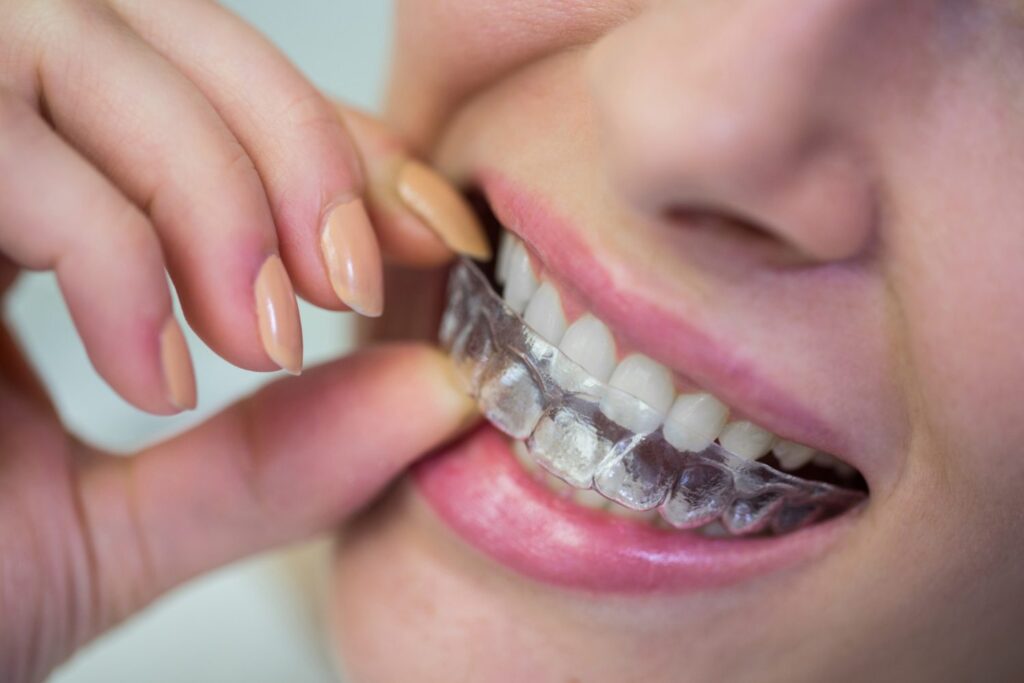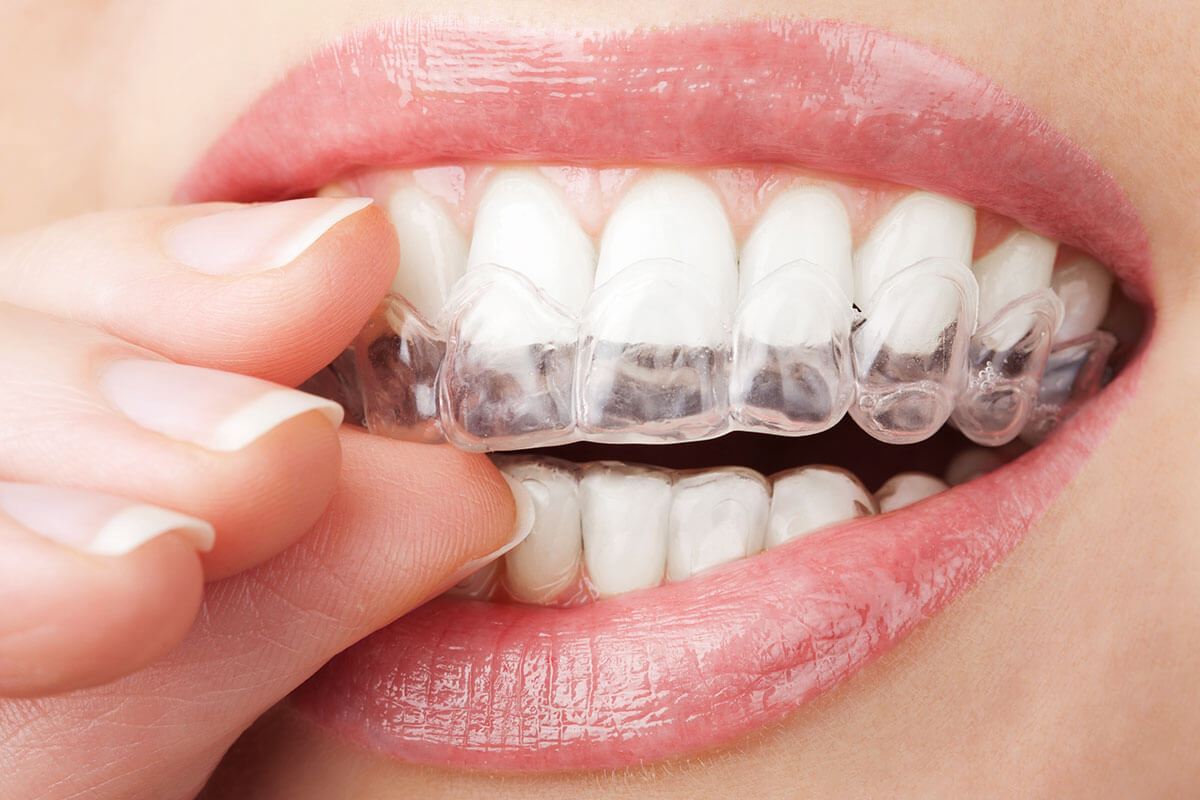Maintaining Oral Health While Making Use Of Invisalign: Tips for a Smooth Experience
Maintaining Oral Health While Making Use Of Invisalign: Tips for a Smooth Experience
Blog Article
Invisalign vs. Conventional Dental braces: Which Alternative Is Right for You?
When thinking about orthodontic therapy, the selection between Invisalign and conventional braces provides several crucial variables that warrant mindful assessment. Invisalign uses a very discreet alternative with removable aligners, while standard braces supply an extra noticeable yet efficient remedy for severe misalignment. Each option encompasses unique benefits and downsides associated with aesthetics, convenience, therapy period, and expense. Recognizing these subtleties is important for making a notified decision that aligns with your individual choices and way of living. The concern continues to be: which option will finest meet your orthodontic requirements and assumptions?
Overview of Therapy Alternatives

In contrast, traditional dental braces include steel braces and wires that are adhered to the teeth. This method uses continuous stress over time to attain positioning. While efficient for complicated orthodontic concerns, standard braces call for routine gos to for adjustments and can position challenges in maintaining dental hygiene because of the difficulty of cleansing around brackets and wires.
Both alternatives have their values, and the option typically pivots on certain oral conditions, way of life choices, and person conformity. Ultimately, consulting an orthodontic specialist is crucial for determining one of the most suitable therapy strategy customized to specific requirements. Recognizing the subtleties of each choice can substantially influence the total success of orthodontic treatment.
Aesthetic Factors To Consider
A considerable aspect affecting the option in between Invisalign and traditional dental braces is the aesthetic allure each treatment offers. Invisalign aligners are crafted from clear plastic, making them practically unseen when worn. This very discreet look is especially interesting adults and teenagers who may feel awkward about their orthodontic treatment. The capacity to keep a natural smile throughout the placement procedure can dramatically enhance the patient's self-confidence in social and specialist settings.
In comparison, standard dental braces include steel braces and cables, which can be extra recognizable. While developments in orthodontic innovation have actually brought about the growth of smaller brackets and colored elastics, traditional braces still preserve an even more noticeable profile. For some individuals, the exposure of dental braces might deter them from seeking needed treatment.
Eventually, the choice in between Invisalign and traditional dental braces might depend upon personal choices concerning aesthetics. People that prioritize discretion typically favor Invisalign, while those who are less concerned about presence may choose traditional braces. Comprehending the visual implications of each choice is vital for making an educated choice that straightens with one's way of life and preferences.
Convenience and Convenience

In terms of convenience, Invisalign aligners are removable, making it possible for individuals to enjoy their favored foods without constraint and preserve optimal oral health. Cleaning and flossing are streamlined, as the aligners can be obtained throughout these regimens, whereas typical braces need mindful navigating around cords and brackets.
In addition, Invisalign's dynamic system allows for fewer orthodontic brows through. People typically obtain several collections of aligners at as soon as, which can streamline the therapy procedure and lower time invested in the orthodontist's chair. In comparison, traditional braces require regular adjustments, making them much less practical for those with active schedules. Invisalign. In general, the comfort and convenience of Invisalign make it an enticing choice for numerous people looking for orthodontic treatment.
Therapy Duration and Efficiency
While both Invisalign and typical braces work in dealing with oral imbalances, the duration of treatment can vary significantly in between both options. Typically, Invisalign therapy can take anywhere from 12 to 18 months, depending on the intricacy of the situation. The clear aligners function by gradually shifting teeth right into their wanted placements, and normal follow-ups with an orthodontist aid make sure development remains on course.
On the other hand, traditional dental braces often require a longer dedication, typically ranging from 18 months to three years. This results from their set nature and the use of wires and braces, which can be a lot more effective for serious imbalances and intricate instances (Invisalign). The treatment efficiency of conventional dental braces is well-documented, as they enable precise modifications and higher control over tooth movement
Inevitably, the selection between Invisalign and traditional braces may rest on both the awaited therapy period and the particular oral issues handy. Consulting with an orthodontist is essential, as they can supply tailored referrals based upon specific needs, making certain the picked method aligns with preferred durations address and end results.
Price Contrast and Insurance Alternatives
Cost plays a substantial role in the decision-making process for individuals thinking about orthodontic therapy, whether going with Invisalign or standard braces. Generally, the expense of Invisalign varieties from $3,000 to $8,000, while standard braces normally set you back between $2,000 and $6,000. Elements affecting these expenses include the complexity of the instance, the duration of therapy, and geographical place.
Lots of oral insurance plans offer partial insurance coverage for orthodontic treatments, yet the specifics can vary widely. Usually, conventional braces may be extra regularly covered by insurance policy plans contrasted to Invisalign, which some insurance firms classify as an aesthetic procedure.
Additionally, numerous orthodontic techniques use versatile layaway plan, making both therapy alternatives more accessible. check my site Patients must ask about potential financing alternatives and discount rates for in advance settlements. Evaluating the complete cost, including insurance advantages and repayment strategies, is vital for making a notified decision that aligns with both aesthetic choices and budget factors to consider.

Conclusion
In summary, the choice between Invisalign and typical dental braces pivots on several factors, including aesthetic preferences, convenience, therapy period, and expense. Invisalign provides a discreet, detachable choice that assists in dental hygiene and dietary flexibility, while traditional dental braces might be preferable for complicated oral concerns and usually come with a lower cost point. Eventually, consultation with an orthodontist is important to assess specific scenarios and identify one of the most proper treatment option for accomplishing ideal dental alignment.
When thinking about orthodontic therapy, the option between Invisalign and standard braces offers numerous vital variables that warrant cautious evaluation.Contrasting Invisalign and typical braces reveals unique treatment choices for orthodontic adjustment.While both Invisalign and conventional dental braces are efficient in dealing with oral imbalances, the duration of treatment can vary substantially in between the 2 choices.Price plays a substantial duty in the decision-making process for people thinking about orthodontic therapy, whether choosing for Invisalign or traditional braces.In recap, the choice in between Invisalign and typical dental braces hinges on several factors, including visual choices, comfort, therapy period, and price.
Report this page